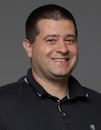Sound Reinforcement
Data is displayed for academic year: 2023./2024.
Lecturers
Course Description
The goal of this course is to provide fundamental knowledge required for a successful design of a sound reinforcement system that will be adequate for the type and the purpose of the space in which it is installed. The introductory part of the course gives an overview of the basic parameters and terms related to sound and its propagation and behaviour in open and closed spaces. The most important components of a sound reinforcement system are considered regarding their function and purpose in the electroacoustic signal chain. In particular, these are devices that receive sound, as well as the ones that are used for amplifying, processing, mixing, transferring, routing and reproducing the audio signal. The methods of interconnecting these devices are described as well. Special attention is given to loudspeakers and their parameters, as well as the most common types of loudspeaker enclosures. Besides individual loudspeakers, loudspeaker arrays are described as well, as complex structures used for sound reproduction that provide different ways of manipulating their radiation pattern. The most common system configurations are explained. A detailed account is given on the calculations of a sound reinforcement system regarding not only its quantitative parameters (sound pressure level, required electric power, and gain), but also the qualitative parameters connected with speech intelligibility and music clarity. Emphasis is put on the interaction of the sound system and the space in which it is installed. The ultimate topic of the course is computer-aided design of a sound reinforcement system.
Study Programmes
University graduate
[FER3-HR] Audio Technologies and Electroacoustics - profile
Elective Courses
(2. semester)
Elective Courses of the Profile
(2. semester)
[FER3-HR] Communication and Space Technologies - profile
Elective Courses
(2. semester)
[FER3-HR] Computational Modelling in Engineering - profile
Elective Courses
(2. semester)
[FER3-HR] Computer Engineering - profile
Elective Courses
(2. semester)
[FER3-HR] Computer Science - profile
Elective Courses
(2. semester)
[FER3-HR] Control Systems and Robotics - profile
Elective Courses
(2. semester)
[FER3-HR] Data Science - profile
Elective Courses
(2. semester)
[FER3-HR] Electrical Power Engineering - profile
Elective Courses
(2. semester)
[FER3-HR] Electric Machines, Drives and Automation - profile
Elective Courses
(2. semester)
[FER3-HR] Electronic and Computer Engineering - profile
Elective Courses
(2. semester)
[FER3-HR] Electronics - profile
Elective Courses
(2. semester)
[FER3-HR] Information and Communication Engineering - profile
Elective Courses
(2. semester)
[FER3-HR] Network Science - profile
Elective Courses
(2. semester)
[FER3-HR] Software Engineering and Information Systems - profile
Elective Courses
(2. semester)
Learning Outcomes
- define the basic terms used for describing the sound propagation in space, both open and closed
- distinguish between the elements in the sound reinforecement chain according to their purpose and technical characteristics
- distinguish between different types of loudspeaker box designs and their advantages and disadvantages in sound reinforcement applications
- estimate the interaction between the space and the sound reinforcement system
- analyze the problem of instaling a sound reinforcement system in a given space depending on its acoustical properties and intended purpose
- design a sound reinforcement system with appropriate charactersitics and topology that will ensure the best possible conditions for transmission of acoustic information and is appropriate for a given space
- evaluate the quality of a sound reinforcement system and its adequacy for a given space based on acoustical measurements and computer simulations
Forms of Teaching
Lectures
The theory is explained regarding sound propagation, the elements of the electroacoustic chain, and the calculations of an optimal sound reinforcement system. The lectures are complemented with demonstrations and practical examples.
ExercisesCalculation tasks and examples are solved in class.
Independent assignmentsThe students are required to complete the final project, in which they design the optimum sound reinforcement system for the space of choice.
LaboratoryThe students get acquainted with the practical aspects of sound reinforcement through work in small teams.
Week by Week Schedule
- Dynamic microphone; Crystal microphone; Condenser microphone, carbon microphone, electret microphone
- Practical constructions of dynamic loudspeakers
- Practical constructions of dynamic loudspeakers
- Loudspeaker mounting; Loudspeaker construction
- Room influence on the loudspeaker reproduction
- Delay lines; Filters; Compressor; Expander; Limiter
- Delay lines; Filters; Compressor; Expander; Limiter
- Midterm exam
- Connecting audio devices (input, output impedance)
- Connecting audio devices (input, output impedance)
- Parts of PA systems
- Layout of PA systems
- Calculations of PA systems
- Calculations of PA systems
- Final exam
Literature
For students
General
ID 222625
Summer semester
5 ECTS
L2 English Level
L2 e-Learning
30 Lectures
0 Seminar
15 Exercises
8 Laboratory exercises
0 Project laboratory
0 Physical education excercises
Grading System
Excellent
Very Good
Good
Sufficient


 Pristupačnost
Pristupačnost
